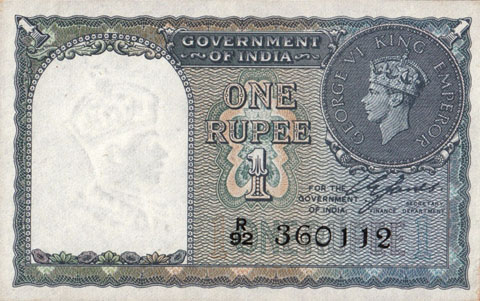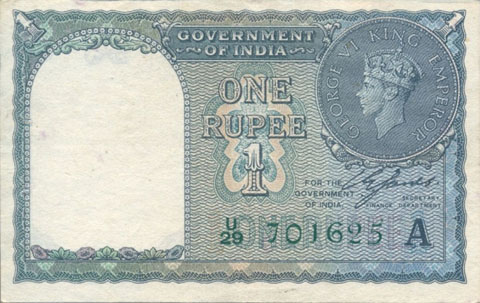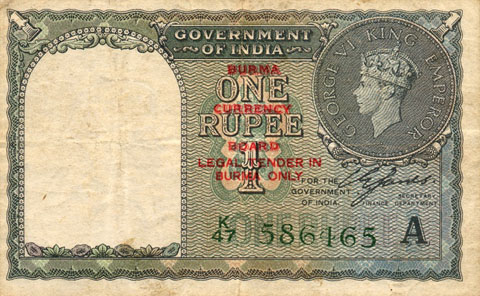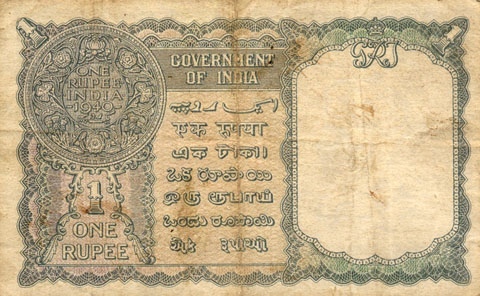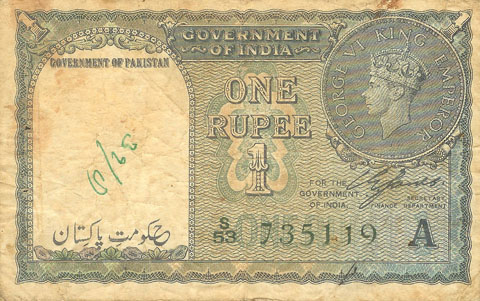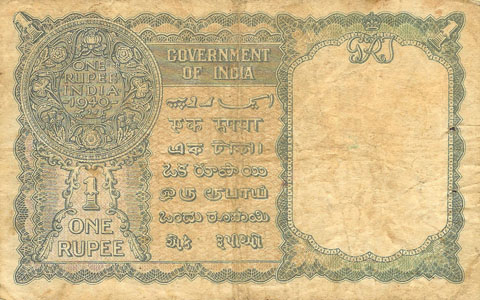India Portrait One Rupee Notes Part 3 of 3
| India Portrait One Rupee Notes Part 1 of 3 | India Portrait One Rupee Notes Part 2 of 3 | India Portrait One Rupee Notes Part 3 of 3 |
The third and final issue depicting a British King's portrait of one rupee notes was the issue which has King George VI on a coin of one rupee with the date 1940 on the back.
The language panel has been moved to the back of the note as per part 1 - modified in the following way, Devanagari script changed to Hindi and the Oriya language removed making the panel 7 languages in total all other languages as per part 1.
With the 1935 issue not released until 1940 the 1940 issue was not required until 1944 a continuing shortage of precious metals to produce coins necessitated the requirement.
